While Formula 18s have enjoyed a surge in popularity in recent years, the state of the class today is the result of growth and development since the class’s founding in 1985. F18s are sailed by a very broad spectrum of people of all ages, from professionals to club racers and recreational weekend sailors.
Today’s F18 is a fast, sophisticated race boat. It is also a very stable platform—one that is every bit as fast as other high-performance small boats, yet much more forgiving to drive and much more amenable to the time and budget limits that face the vast majority of sailors. With a minimum of sail controls, together with the self-tacking jib, crews can focus more on driving, boat handling, and tactical options instead of the subtle nuances of coaxing an extra tenth of a knot of boat speed from a spaghetti pile of control lines.
The F18 is not a strict one-design class, but it is a class where innovations in design are subject to strict constraints. In addition to setting a minimum all-up weight and limiting length, beam, and sail area, the class rules lay out the following conditions:
- hulls cannot include carbon or other exotic materials
- all spars must be of aluminum and may not be tapered
- daggerboards must be symmetrical (no curved daggerboards) with a maximum length
- crossbeams, rudder stocks, tillers, and the tiller crossbar must be aluminum
- apart from some fittings, carbon is permitted only in daggerboards, rudder blades, and the tiller extension
- standing rigging must be stainless steel
- sail area is measured by combining the surface area of the wing mast with the square footage of the sail fabric itself (mast sections with longer chord lengths must support sails with less cloth)
- differences in crew weight are equalized via requirements that lightweight crews (less than 330 lbs. combined) use corrector weights
The Formula 18 rule has proven highly successful at building the kind of class it intended. Over time the F18 class has shown itself capable of carrying out the critical balancing act of, on the one hand, fostering design innovation and, on the other, ensuring the competitive longevity of the boats. Today’s stock factory boats from any of the major builders benefit from the expertise of some of the world’s most talented yacht designers. They incorporate levels of technical innovation that are often well beyond those of larger, slower, and much costlier monohull classes. Nonetheless, older F18s have shown time and again that they can successfully compete with the latest designs. Dr. Martin Fischer, who designed Hobie’s F18, the Wild Cat, put it this way:
Especially in an up and down regatta with lots of participants the skill of the sailors plays a very important role. This becomes even more important in strong winds, when boat handling becomes an issue. In the F18 the speed difference between a fast boat and an average boat is of the order of a few percent. This relatively small advantage is not sufficient for an average crew to beat a top crew.
Boat Specification:
- maximum length: 5.52 meters (18.11 feet)
- maximum width: 2.6 meters (8.53 feet)
- minimum weight (ready to sail): 180 kg (396 lbs)
- maximum mast height: 9.15 meters (30 feet)
- maximum mainsail + mast area: 17 m² (183 sq ft)
- maximum jib area: 4.3 m² (46.3 sq ft)
- maximum spinnaker area: 21 m² (226 sq ft)
- Crew: 1 skipper and 1 crew with minimum combined weight: 115 kg (253 lbs)
- Teams weighing less than 150 kg (330 lbs) combined shall carry extra weight equal to half the difference between their actual weight and 150 kg (330 lbs).
The most up to date class rules can be found on World Sailing’s website.
There is also a great article in Wikipedia describing the history of the class in more detail.
